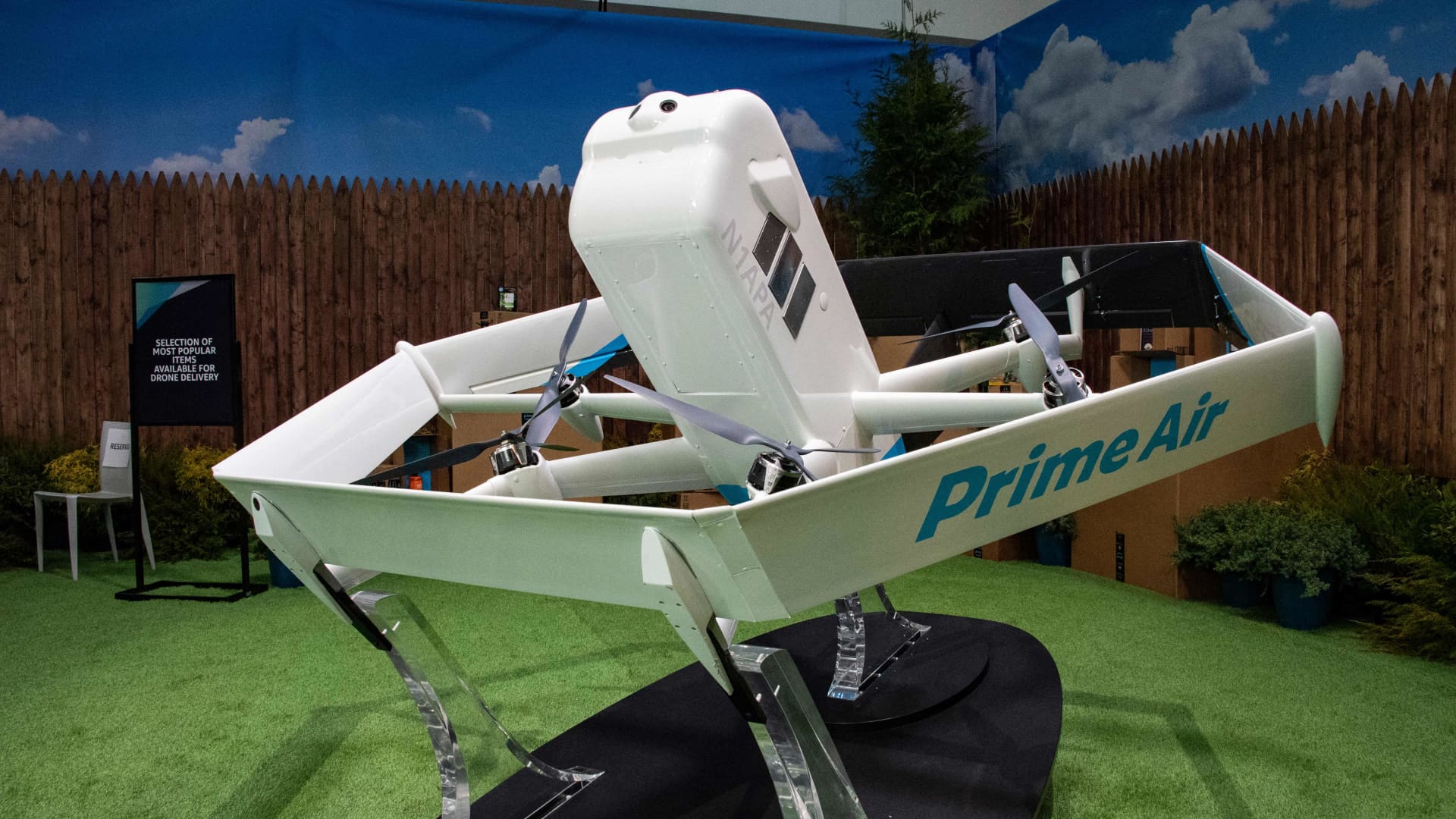Amazon has lost two executives key to the company’s drone delivery operations, the latest setback for an aspirational program that’s required hefty investment but has experienced scant success.
Jim Mullin, Prime Air’s chief pilot, left Amazon last month, according to his LinkedIn profile. Robert Dreer, who reported to Mullin and was responsible for all of Prime Air’s test operations, departed last week for a role at electric vertical takeoff and landing aircraft startup Opener, he wrote in a LinkedIn post.
Both employees were based at Prime Air’s main site in Pendleton, Oregon. Their exits have not been reported on publicly beyond their individual posts, and neither responded to requests for comment over LinkedIn.
The departures come at a critical juncture for Prime Air, which has struggled to transition into a fully operational service since Amazon founder Jeff Bezos predicted in 2013 that within five years Amazon would deliver by drone packages weighing 5 pounds or less to customers’ doorsteps. Mullin, a former Marine One pilot during the Obama administration, oversaw Prime Air safety and regulatory compliance, as well as site leads at the unit’s facilities in Oregon, California and Texas.
Just as Prime Air was set to launch early this year and start delivering packages sent to consumers, CEO Andy Jassy, who succeeded Bezos in 2021, embarked on the largest round of layoffs in company history, which included significant job cuts at Prime Air. Jassy’s cost-cutting strategy was in response to dramatically slowing growth and investors’ turn away from tech as interest rates rose.
But problems for Prime Air predated the economic downturn. The drone unit has been hamstrung by regulatory restrictions that limit where deliveries can be made. Even at its two launch sites — Lockeford, California, and College Station, Texas — deliveries remain way short of division head David Carbon’s target of 10,000 this year. As of May, the company said it had completed a total of 100 deliveries at those locations.
There’s also been a string of crashes, with multiple reported incidents between 2020 and 2021. More recently, on June 21 of this year, during tests at the Pendleton site, a drone made an emergency landing in a field and was destroyed, according to a federal crash report viewed by CNBC. Nobody was injured, the report says.
Amazon could now be at risk of not completing a key regulatory requirement of the Federal Aviation Administration that the company needs to prove its drones can fly over people and towns. At the beginning of the year, the company began durability and reliability (D&R) testing, which requires that Prime Air complete several hundred hours of flying without any incidents.
The company is in the process of completing D&R testing for its current drone model, the MK27-2. It will have to undergo the same regulatory process for its next-generation version, the MK30, which Amazon expects to launch next year.
WATCH: Amazon drones lagging far behind Alphabet’s Wing and Walmart partner Zipline
